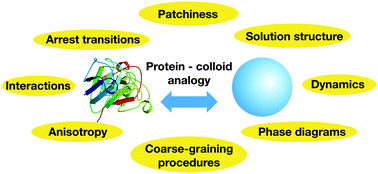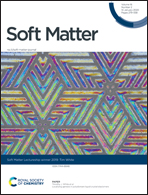Potential and limits of a colloid approach to protein solutions
Abstract
Looking at globular proteins with the eyes of a colloid scientist has a long tradition, in fact a significant part of the early colloid literature was focused on protein solutions. However, it has also been recognized that proteins are much more complex than the typical hard sphere-like synthetic model colloids. Proteins are not perfect spheres, their interaction potentials are in general not isotropic, and using theories developed for such particles are thus clearly inadequate in many cases. In this perspective article, we now take a closer look at the field. In particular, we reflect on the fact that modern colloid science has been undergoing a tremendous development, where a multitude of novel systems have been developed in the lab and in silico. During the last decade we have seen a rapidly increasing number of reports on the synthesis of anisotropic, patchy and/or responsive synthetic colloids, that start to resemble their complex biological counterparts. This experimental development is also reflected in a corresponding theoretical and simulation effort. The experimental and theoretical toolbox of colloid science has thus rapidly expanded, and there is obviously an enormous potential for an application of these new concepts to protein solutions, which has already been realized and harvested in recent years. In this perspective article we make an attempt to critically discuss the exploitation of colloid science concepts to better understand protein solutions. We not only consider classical applications such as the attempt to understand and predict solution stability and phase behaviour, but also discuss new challenges related to the dynamics, flow behaviour and liquid–solid transitions found in concentrated or crowded protein solutions. It not only aims to provide an overview on the progress in experimental and theoretical (bio)colloid science, but also discusses current shortcomings in our ability to correctly reproduce and predict the structural and dynamic properties of protein solutions based on such a colloid approach.

- This article is part of the themed collection: Soft Matter 15th Anniversary Perspectives


 Please wait while we load your content...
Please wait while we load your content...